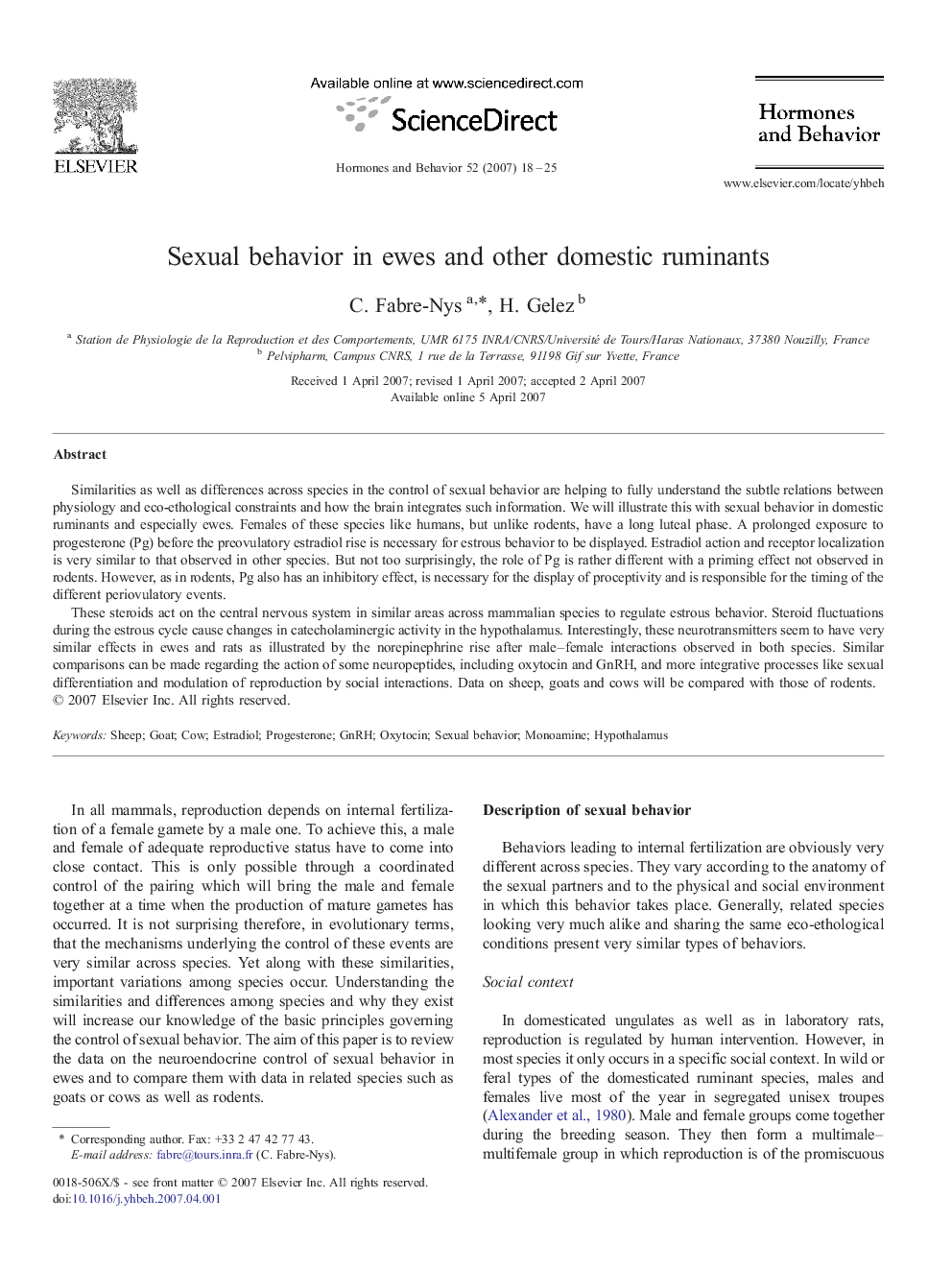| Article ID | Journal | Published Year | Pages | File Type |
|---|---|---|---|---|
| 322964 | Hormones and Behavior | 2007 | 8 Pages |
Similarities as well as differences across species in the control of sexual behavior are helping to fully understand the subtle relations between physiology and eco-ethological constraints and how the brain integrates such information. We will illustrate this with sexual behavior in domestic ruminants and especially ewes. Females of these species like humans, but unlike rodents, have a long luteal phase. A prolonged exposure to progesterone (Pg) before the preovulatory estradiol rise is necessary for estrous behavior to be displayed. Estradiol action and receptor localization is very similar to that observed in other species. But not too surprisingly, the role of Pg is rather different with a priming effect not observed in rodents. However, as in rodents, Pg also has an inhibitory effect, is necessary for the display of proceptivity and is responsible for the timing of the different periovulatory events.These steroids act on the central nervous system in similar areas across mammalian species to regulate estrous behavior. Steroid fluctuations during the estrous cycle cause changes in catecholaminergic activity in the hypothalamus. Interestingly, these neurotransmitters seem to have very similar effects in ewes and rats as illustrated by the norepinephrine rise after male–female interactions observed in both species. Similar comparisons can be made regarding the action of some neuropeptides, including oxytocin and GnRH, and more integrative processes like sexual differentiation and modulation of reproduction by social interactions. Data on sheep, goats and cows will be compared with those of rodents.
